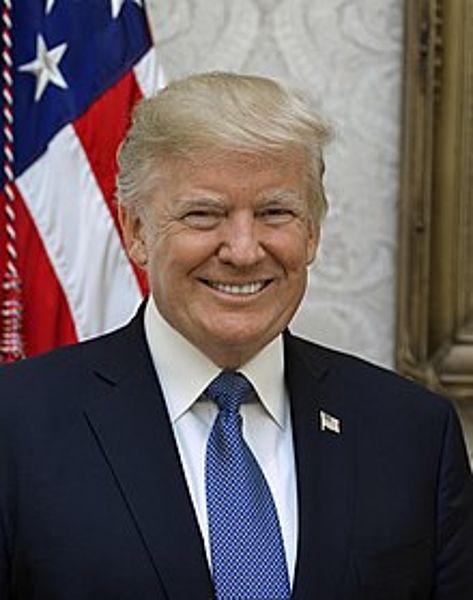Pit stop for the "Twitterer-in-Chief"

Dr. Roman von Ah
Financial Markets
The Potus («President of the United States») provides us with many iconic quotes that will probably be repeated in histories and textbooks for decades. Not because they are good, but because they are very clear examples of bad ideas.
The Potus («President of the United States») provides us with many iconic quotes that will probably be repeated in histories and textbooks for decades. Not because they are good, but because they are very clear examples of bad ideas.
Consumers, not foreigners, pay Trump tariffs
In the business world, it's the oft-heard "trade wars are good and easy to win" thesis. In second place is his statement that he is a "Tariff Man," coupled with the claim that foreigners pay the tariffs that the potus has put in place.
The beauty of the latter claim is that the statement can be verified with data. In our April 2018 blog post, we pointed out economically expected consequences of trade tariffs on foreign goods (e.g., import tariffs on steel). Now we can use initial data to assess the real-world impact.
In 2018, the potus imposed tariffs on about 12 percent of total U.S. imports. Recently, economists from Columbia, Princeton and the New York Federal Reserve published an article titled "The impact of the 2018 trade war on U.S. prices and welfare," which used detailed import data to assess the impact of the tariffs. Their conclusion: foreigners paid none of the (increased tariff) bills; U.S. businesses and consumers paid all. And U.S. consumers' losses (due to higher import prices) exceeded revenues from the new tariffs, so overall the tariffs made Americans' economic situation worse.
How did these economists arrive at their conclusion?
The U.S. government collects data on the prices and quantities of many categories of imports. Many of these have been subject to new tariffs, but many others have not. Because of this starting point, an interesting comparison becomes possible: how do (additionally) tariffed imports compare to the de facto control group of untouched imports. In this way, the impact of tariffs can be realistically estimated. Incidentally, this approach is similar to testing new drugs. One group of test patients receives the new medication and another group of test patients receives only placebos. Only if the new drug produces significantly better results compared to the control group does it enter the market, at best.
Under Trump's vision (better: imagination or phantasmagoria?), foreigners pay the tariffs by lowering their prices for the tariffed goods by the amount of the tariffs, so consumer prices did not change. In fact, however, there is no visible impact of tariffs on import prices.
The figure below shows that foreign suppliers did not absorb any of the tariffs - through their profit margins. Conversely, it is visible that tariff inclusive prices (Figure 1) increased by the full amount of the tariffs.
Source: Amiti, Redding, Weinstein "The impact of the 2018 trade war on U.S. prices and welfare," March 2019.
The tariff-related price increases led to significant behavioral changes. Imports of tariffed items subject to additional tariffs fell sharply, in part because consumers switched to domestic products, but in large part because importers shifted sourcing to countries not currently facing Trump tariffs. For example, a number of companies appear to have already begun buying goods in Vietnam or Mexico that they previously purchased in China.
These behavioral changes are key to the article's conclusion that tariffs have worsened national income and thus welfare in America.
Consider an example. Before the tariff imposition, the U.S. imports some goods from China that cost $100. Then the Tariff Man's Administration imposes a 25% tariff, raising the retail price to consumers to $125. If this good continues to be imported from China, consumers lose $25 per unit purchased. However, the government receives an additional $25 in taxes, so total national income remains unchanged.
Suppose importers switch to a more expensive source of supply that is not subject to the tariff. For example, they buy $115 worth of goods from Vietnam. Compared to the pre-tariff state, consumers lose only $15 in this case. Assuming that no tariff is levied on Vietnamese imports, the collected tariff revenue of 25 dollars is missing in comparison to China imports. For the nation as a whole, the lack of tariff revenue results in a loss of $15.
On the other hand, consumers can also turn to a domestic supplier (U.S. company). How does the story change if the latter will sell the product for $120?
The U.S. is near full employment. This means that there is an opportunity cost to producing a good product domestically. Getting domestic producers to produce something that was previously imported results in a net loss of $20 without offsetting (tariff) revenue.
By the way, in practice, any manufacturing jobs added by the Trump tariffs are likely to be offset by losses of other manufacturing jobs. In part, that's because most of the tariffs are on intermediate goods - inputs to manufacturing, so employment gains in, say, steel are offset by losses in autos and other downstream sectors. In addition, tariffs have likely contributed to a rising dollar, making U.S. exports less competitive.
In summary, Trump's tariffs have raised consumer prices (for the American people) rather than depressing foreign profits. Tariffs have allowed the U.S. government to raise some revenue, but there has also been an incentive to avoid the tariff tax by consumers switching to other, non-tariffed sources of imports. Of course, this tax avoidance itself has come at a cost, as the alternative sources are likely to have higher prices than the previous source country. Overall, the newly introduced tariffs lead to a worsening of the economic situation for U.S. citizens.
While it is true that the numbers currently in effect are not that large (yet). The article estimates the net welfare loss at $1.4 billion per month or $17 billion per year, which is less than 0.1 percent of U.S. GDP. But extracting benefits or gains for Americans is not. The numbers, and thus the net loss of wealth, could be much larger if the trade war expands, for example, with a tariff on European cars. And that's only on the adventurous grounds that "national security" is threatened by European car imports.
This article is an abridged and edited translation of the recent New York Times article "How Goes the Trade War? Consumers, not foreigners are paying the Trump tariffs" by Nobel laureate Paul Krugmann, who received his nobilization in particular for his contributions to foreign trade theories.


